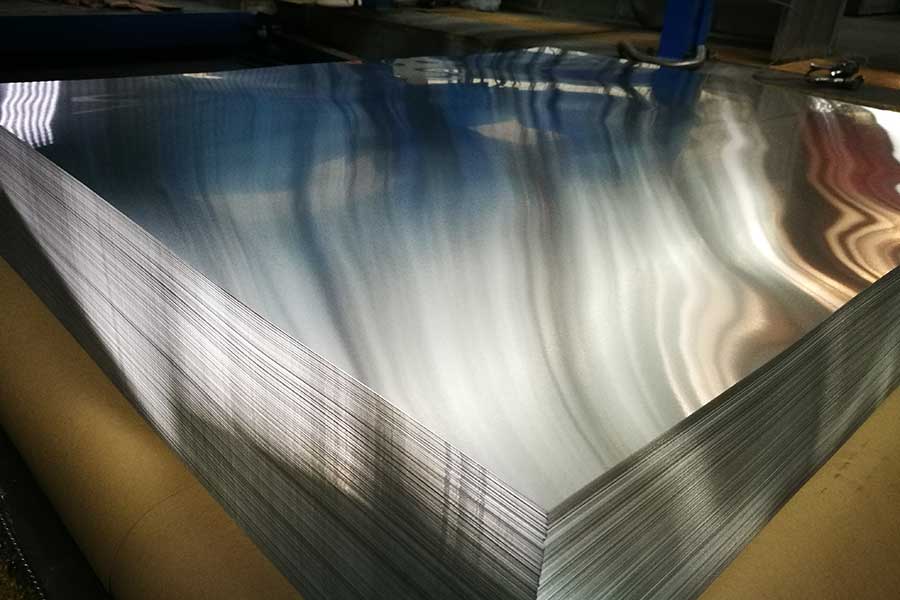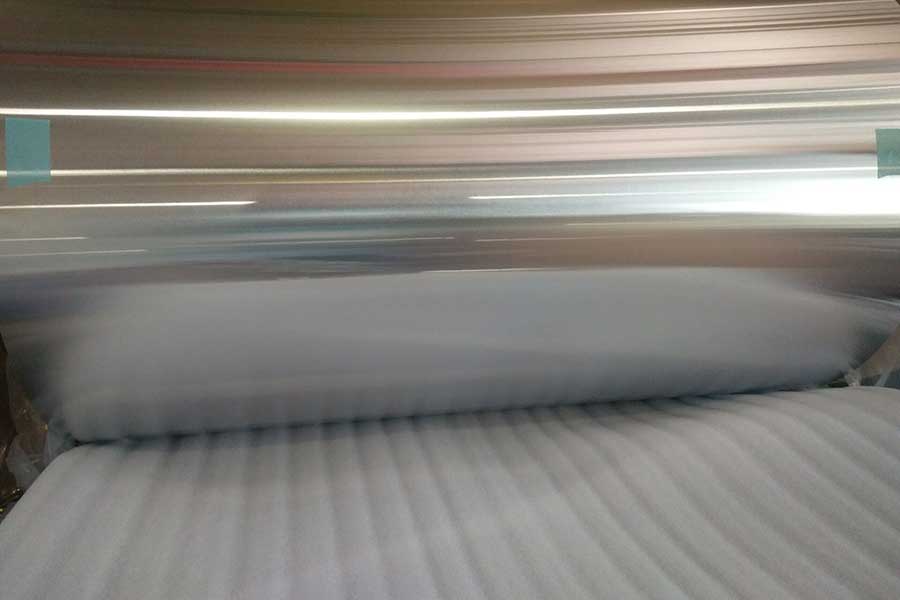NEWS
aluminum substrate thermal CTP plate
Writer: admin Time:2020-05-29 10:18 Browse:℃
The characteristics of CTP technology have certain requirements for the quality of CTP plate and the aluminum substrate thermal CTP plate used for the production of CTP plate, such as apparent quality, physical properties and electrolytic performance. The following is a detailed introduction to the aluminum plate base commonly used according to CTP plate.
The overall requirements of printing for plate materials are very high, especially at present CTP plate materials are mostly used for high-grade color printing plate making. To ensure the plate quality, the apparent quality of the aluminum substrate thermal CTP plate is the premise.
Requirements for apparent performance of aluminum substrate thermal CTP plate
The basic requirements for the appearance of aluminum substrate thermal CTP plate are clean and flat, free from defects such as cracks, corrosion pits, points, air holes, scratches, folds, marks, peeling, pine like patterns, oil marks, etc.; the surface is not allowed to have defects such as non-metal pressing and sticking, cross skin, cross grain, etc.; it is not allowed to have problems such as slight color difference, bright strip, etc.; it is not allowed to have bulge, lotus leaf edge, etc. In addition, CTP plate production has the following three specific requirements for the flatness of plate base.
(1) The gap between the unfolding surface and the plane of aluminum coil shall not be greater than 1mm, and the number of waves per meter of unfolding surface shall not be more than 3;
(2) Side bending, no more than 1mm per meter;
(3) The aluminum coil shall be tight and the end face shall be neat, and no crack edge or burr is allowed.
CTP plate is not allowed to have a little unevenness, because most CTP equipment uses scanning imaging, unlike PS plate printing, which uses vacuum method to make the plate and film close, such as plate flatness is poor, which will affect the quality of laser imaging. Of course, the flatness of plate material is related to the condition of plate material production equipment.
Requirements for the geometric dimension of aluminum substrate thermal CTP plate
Now CTP plate making machine market is mainly thermal CTP and violet laser CTP two categories. The thermal CTP adopts the external drum laser scanning mode to plate making, the plate material is fixed on the outside of the drum, and the drum rotates at high speed at the same time during plate making. The purple laser CTP plate making machine mostly adopts the inner drum laser scanning mode to make plates. The plates are placed in the inner side of the drum. When making plates, the plates are still and the laser head scans at high speed. The plate making mechanism has high speed, and adopts automatic plate loading and automatic positioning and drilling, so it is very strict on the geometric size of the CTP aluminum substrate . The geometric dimensions of the plate base include the thickness of the plate base, the width of the aluminum coil, the uniformity of the plate base, etc.


1. Thickness and tolerance of aluminum substrate thermal CTP plate
The thickness of aluminum substrate thermal CTP plate is generally 0.280mm, slightly thicker than that of PS plate (the thickness of PS aluminum substrate is 0.270mm ± 0.005mm). Some foreign companies use 0.275mm thick aluminum substrate thermal CTP plate, and the thickness tolerance is ± 0.005mm. aluminum substrate thermal CTP plate is thicker, plate stiffness will be better, not easy to bend.
2. Aluminum coil width tolerance
In China, the plate production generally does not install the on-line trimming device, so the width tolerance of aluminum coil is required to be no more than ± 0.5mm, preferably no tolerance.
There are also clear requirements for the cutting quality of aluminum coil, that is, there should be no burr, ruffle edge and other phenomena on both sides of aluminum coil after longitudinal cutting.
Of course, both sides of the electrolytic edge should be cut before coating.
3. Vertical and horizontal evenness of CTP aluminum substrate
The tolerance of longitudinal and transverse thickness of aluminum substrate thermal CTP plate shall be no more than ± 0.005mm. At present, the thickness of plate set by each model of plate making machine is mostly 0.280mm or 0.275mm; the thickness deviation will affect plate making, and the parameters set by CTP plate making machine are generally not allowed to be adjusted casually.
Requirements for aluminum substrate thermal CTP plate performance


aluminum substrate thermal CTP plate must have good physical and mechanical properties.
CTP plate mostly adopts automatic plate loading, automatic positioning and drilling device, which requires plate material to have a certain stiffness. If the aluminum substrate thermal CTP plate is too soft, the stiffness is poor, and it is easy to bend and affect the previous version. The aluminum plate base is too hard to be leveled. It can also be adjusted on the machine. At present, the aluminum substrate thermal CTP plate production in China is generally soft except for the aluminum coil produced by a few manufacturers, such as Southwest Aluminum Industry; the aluminum coil produced by some Japanese companies is also weak in strength. At present, it is generally recognized that the aluminum coil with the status number of H19 and brand number of 1052 (hereinafter referred to as "dealuminium 1052") of hydro aluminum company in Germany is the most suitable for the production of CTP plate. See Table 1 for comparison of mechanical properties of aluminum plate base of different brands.
Table 1 Comparison of mechanical properties of aluminum substrate thermal CTP plate of different brands
Although the aluminum plate of dealuminium 1052 has high strength, its levelness is very high. The multi roller leveler and simple leveler system can adapt to it. There are few problems such as bulge and ruffle edge, and the flatness of the plate is excellent.
Requirements for electrolytic performance of CTP aluminum substrate
Because CTP plate is mostly used for high-grade color printing, the sand mesh value of CTP aluminum substrate is smaller than PS plate. Especially, the scanning plate making technology of CTP plate making machine mostly adopts FM net or FM / am hybrid screening technology. The reduction of fine dots and reticles is directly related to the surface roughness of CTP aluminum substrate, that is, the sand mesh value of plate base. The thicker the sand mesh, the worse the reduction of dots and reticles.
For CTP plate sold on the market, the sand mesh value RA is generally 0.45-0.60 μ m, the ideal value is 0.45-0.55 μ m, while the sand mesh value Ra of PS plate is generally 0.60-0.80 μ M. In order to get fine sand mesh, aluminum substrate thermal CTP plate must have good electrolytic performance. At present, it is difficult for most domestic aluminum plates to make sand mesh with Ra value of 0.45-0.55 μ M. Of course, the thickness of sand should also be related to the electrolytic process conditions of plate production.
To obtain fine and uniform sand layer by electrolysis, it is related to the surface quality and roughness of the basic body of the plate. If the surface quality of the CTP aluminum substrate is too poor, the disadvantages and defects of the plate can not be eliminated without strengthening electrolysis, resulting in coarse sand mesh. If the Ra value of the plate base is ≥ 0.30 μ m, it is difficult to make fine sand mesh. See Table 2 for RA values of different bases.
Table 2 RA values of different aluminum substrate thermal CTP plate
In order to prepare fine and uniform sand layer, the internal composition of aluminum substrate thermal CTP plate is the key, that is, it is related to the composition of aluminum alloy in the production of aluminum plate, that is, it is related to the content and composition of micro special metals contained in aluminum alloy. Dealuminium 1052 aluminum plate is due to the more reasonable content of special metals, so that its plate base has good physical and mechanical properties and can significantly improve its electrolytic suitability, which can be suitable for hydrochloric acid and nitric acid electrolysis; it can significantly improve the response sensitivity of electrolytic sand, and can form a fine and uniform sand layer without strengthening treatment.
In a word, the overall quality of CTP aluminum substrateis higher than that of PS aluminum substrate. At present, in order to ensure the quality of CTP plate, most of the offset plate manufacturers are using imported aluminum rolls, among which most are German products.
PREVIOUS:What is CTP positive plate NEXT:UV positive thermal CTP plate
CTP PLATES
CONTACT US
Skype: chalcoaluminum
Phone: 86 17344894490
Tel: +86-371-55689814
Email: business@chalcoaluminum.com
Add: No.89 Science Avenue,National HI-Tech Industry Development Zone,Zhengzhou,Henan





